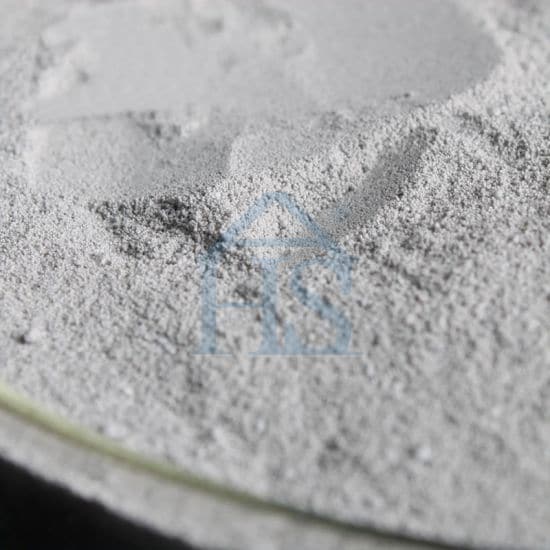ポゾラン反応とは?
定義とメカニズム
ポゾラン反応は、ポゾランの化学プロセスを指します, 反応性シリカおよび/またはアルミナを含む材料, 水酸化カルシウムと反応します (ライムとも呼ばれます) 水の存在下で. この反応は、ケイ酸カルシウム水和物を生成します (CSH) カルシウムは水和物を硫酸化します (CAH) - セメント水分補給中に形成された同じ製品, コンクリートの強度と耐久性に貢献しています.
具体的な技術における重要性
ポゾラン反応は、水酸化カルシウムを消費するため、コンクリートのパフォーマンスを向上させる上で重要です, セメント水和の副産物, これは、具体的な耐久性に有害な場合があります. CSHとCAHに変換します, ポゾラン反応は、強度と耐久性の向上に寄与します, 透過性の低下と同様に.
ポゾラン反応の強化におけるシリカフュームの役割
反応性と粒子サイズ
シリカフュームの超微粒子と高シリカ含有量は非常に反応性が高くなります, その結果、ポゾラン反応が加速されます. 粒子サイズが小さくなると、セメント粒間のボイドを埋めることができます, 密度の高い微細構造をもたらします.
強度と耐久性の向上
ポゾラン反応を強化することにより, シリカフュームは、追加のCSHとCAHの形成に貢献します, コンクリートの機械的特性と耐久性の向上.
コンクリート中のシリカフュームの利点
圧縮強度の向上
コンクリート混合物にシリカフュームを追加すると、圧縮強度が大幅に増加します. これは、ポゾラン反応の加速と密度の高い微細構造によるものです, これは、より強く、より耐久性のあるコンクリートにつながります.
化学攻撃に対する耐性の強化
Concreteの透過性を低下させるSilica Fumeの能力により、化学攻撃により耐性があります, 硫酸塩や塩化物からのものなど. これは、過酷な環境にさらされる構造で特に重要です, 橋のように, 海洋構造物, 廃水処理植物.
透過性の低下
シリカヒュームの超微粒子は、セメント粒間の空隙を埋めます, コンクリートの浸透性を低下させる. この透過性の低下は、コンクリートを水の浸透から保護するのに役立ち、凍結融解サイクルによって引き起こされるその後の損傷, 腐食, およびその他の形態の劣化.
アルカリ・シリカ反応を緩和します
シリカヒュームは、アルカリシリカ反応を緩和するのに役立ちます (ASR), コンクリート構造に大きな損傷を引き起こす可能性のある化学反応. セメントペーストでアルカリを消費することにより, シリカフュームはASRのリスクとその有害な影響を減らします.
課題と制限
取り扱いと保管
シリカフュームの超微粒子サイズは、処理して保管するのが難しくなる可能性があります. それは簡単に空中になる可能性があります, 潜在的な健康と環境の懸念を生み出します. これらの問題を管理するには、適切な予防策と機器が必要です.
コストに関する考慮事項
シリカヒュームはコンクリートに多くの利点を提供します, また、他のSCMよりも高価になる可能性があります. 具体的な混合物での使用を検討する際には、利益に対するコストを比較検討することが不可欠です.
結論
具体的な性能の向上におけるシリカフュームの有効性は、主にポゾラン反応を促進する能力によるものです. その超微粒子と高い反応性は、強度の向上に寄与します, 耐久性, および化学攻撃に対する耐性. でも, 取り扱いなどの課題, ストレージ, シリカの煙をコンクリート混合物に組み込む場合は、コストを考慮する必要があります.
よくある質問
Q1: シリカフュームはあらゆる種類のコンクリートで使用できますか?
A1: シリカフュームは、さまざまなコンクリート混合物で使用できます, しかし、その利点と潜在的な課題は、プロジェクトの特定の要件に基づいて慎重に検討する必要があります.
Q2: シリカシはコンクリートをどのように改善しますか?
A2: シリカフュームは、ポゾラン反応を加速することにより、コンクリートの性能を向上させます, 密度の高い微細構造をもたらします, 圧縮強度の向上, 透過性の低下, 化学攻撃に対する耐性の強化.
Q3: ポゾラン反応とは何ですか?
A3: ポゾラン反応は、反応性シリカおよび/またはアルミナを含む材料が水の存在下で水酸化カルシウムと反応する化学プロセスです, ケイ酸カルシウム水和物とカルシウムアルミン酸塩を形成します, コンクリートの強度と耐久性に貢献しています.
Q4: コンクリートでシリカフュームを使用することの課題と制限は何ですか?
A4: シリカヒュームを使用することの課題には、超微粒子サイズによる取り扱いと保管が含まれます, potential health and environmental concerns, and cost considerations.





